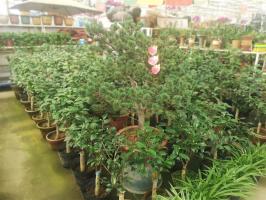Can I Bring a Potted Plant into Canada?
Are you planning to bring a potted plant into Canada? The answer is not a straightforward yes or no. There are certain rules and regulations that you must follow. In this article, we will discuss these regulations and provide you with all the information you need to bring a potted plant into Canada without any hassle.
Rules and Regulations
The Canadian Food Inspection Agency (CFIA) has strict rules and regulations regarding the import of plants, including potted plants, into Canada. The regulations exist to prevent the introduction and spread of plant pests and diseases to Canada's agriculture and ecosystems. Therefore, you must comply with these regulations to avoid any penalties and trouble.
Before bringing a potted plant into Canada, you must ensure that the plant meets the CFIA's requirements. Firstly, the plant must be free from soil, pests, and plant debris. Secondly, the plant's roots must be bare-rooted or wrapped in sphagnum moss, vermiculite, or other sterile, soil-free planting media. Finally, the plant must be labeled with its common name, scientific name, and the name and address of the grower or seller.
If the potted plant you intend to bring into Canada fails to meet these requirements or inappropriate documentation is missing, the plant may be denied entry or destroyed. Therefore, it is crucial to do your research and ensure that the plant meets all the required regulations before bringing it into Canada.
Permits and Certificates
Depending on the type of potted plant you intend to bring into Canada, you may require permits or certificates. Some plants are regulated, and bringing them into Canada without appropriate documentation is illegal and can result in hefty fines and even imprisonment.
If the potted plant you plan to bring into Canada is not for commercial purposes, you do not require a permit. However, if the plant is for commercial purposes, you must obtain a permit from the CFIA. Additionally, some plants require a phytosanitary certificate. A phytosanitary certificate is an official document that certifies that the plant meets the phytosanitary requirements of the importing country.
It is best to contact the CFIA directly to determine if the potted plant you intend to bring into Canada requires a permit or certificate. The CFIA will provide you with all the necessary information and guidance regarding permits and certificates.
Border Crossing Process
When crossing the border into Canada, you must present the potted plant to the border services officer for inspection. The officer will examine the plant to ensure it meets all the regulations and requirements. If the plant is in compliance, the officer will issue a "Release for Entry" document, which allows you to bring the plant into Canada. However, if the plant does not meet the regulations, the plant may be denied entry, or you may need to complete additional paperwork and inspections before bringing it into Canada.
Conclusion
Bringing a potted plant into Canada requires careful planning, research, and compliance with the CFIA's regulations and requirements. Ensure that the plant meets all the requirements, obtain any necessary permits or certificates, and be prepared for an inspection at the border. By following these steps, you can bring your potted plant into Canada without any trouble.
Remember, do not risk bringing a plant into Canada without complying with the regulations. The consequences can be severe and may result in penalties, fines, or even imprisonment. So, do your research and comply with the regulations to ensure a smooth and successful border crossing.

 how many times do yo...
how many times do yo... how many planted tre...
how many planted tre... how many pine trees ...
how many pine trees ... how many pecan trees...
how many pecan trees... how many plants comp...
how many plants comp... how many plants can ...
how many plants can ... how many plants and ...
how many plants and ... how many pepper plan...
how many pepper plan...






























